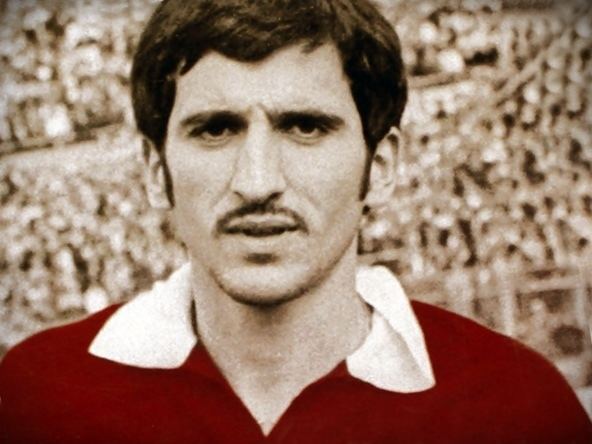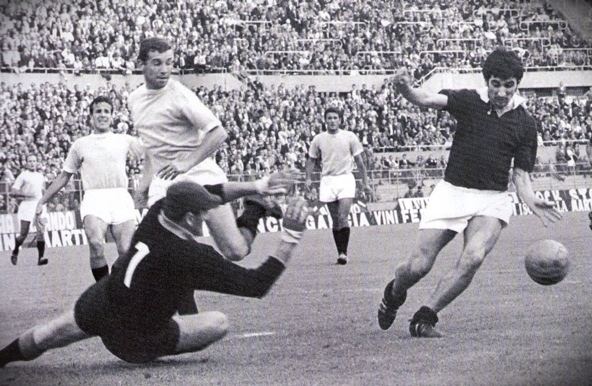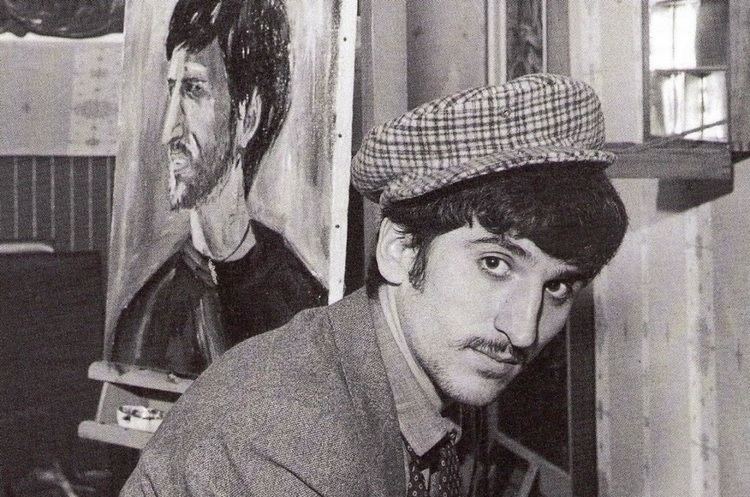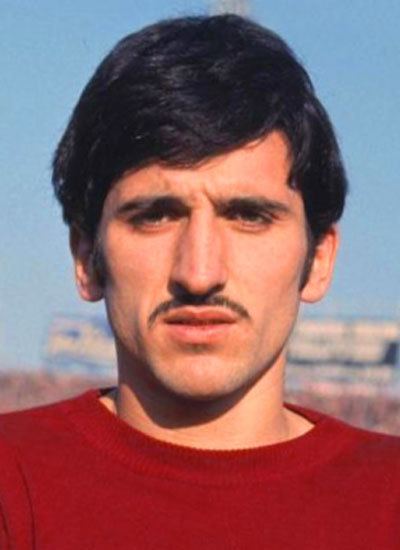Full name Luigi Meroni Name Gigi Meroni Parents Rosa Meroni Role Footballer Siblings Celestino Meroni | Height 1.7 m Nephews Gigi Meroni Playing position Spouse Cristiana Uderstadt | |
 | ||
Date of birth (1943-02-24)24 February 1943 Date of death 15 October 1967(1967-10-15) (aged 24) Died October 15, 1967, Turin, Italy | ||
Il mito di gigi meroni da sfide i grandi campioni degli anni 60
Luigi "Gigi" Meroni (24 February 1943 – 15 October 1967) was an Italian professional footballer who played as a winger.
Contents
- Il mito di gigi meroni da sfide i grandi campioni degli anni 60
- Gli anni al torino calcio di gigi meroni la farfalla granata
- Club career
- International career
- Style of play
- Death
- References

He played 145 matches in Serie A, scoring 29 goals. At international level, he represented Italy on six occasions between 1966 and 1967, scoring two goals, and took part at the 1966 FIFA World Cup.

Gli anni al torino calcio di gigi meroni la farfalla granata
Club career

Meroni began playing football in a small courtyard of 60 square meters, and then moved to the field of the Oratorio di San Bartolomeo in Como. From the age of two he had lost his father, and his mother Rosa, a professional weaver, had financial difficulties raising three children: Celestino, Luigi (called Luigino, then Gigi) and Maria. His first job was as a designer of silk neckties, he also devoted himself to painting.

His football career began in the Como youth sector, where he also made his debut for the first team, albeit in the second division. He was then sold to Genoa. In the shadow of the Lanterna, Meroni had moments of great notoriety. The "magic" threatened to crack on the last match of the season, when Meroni refused to undergo examinations for doping control, saying that he had forgotten the test in a hotel. Three other players tested positive for amphetamines and Meroni was suspended for the first five rounds of Serie A in 1963.
In 1964, despite the discontent of the Genoa fans, Meroni was sold to Torino, a team coached by Nereo Rocco and on the rise after the decline following the tragedy of Superga. The transfer fee was 300 million lira, a record at the time for a player of only 21 years of age.
He was nicknamed the "butterfly", with reference to his style of play and anticonformist outfits (he was notorious for his cohabitation as husband and wife with a young divorcee, Cristiana Uderstadt), and the "beatnik del gol" (the beatnik of football) for his artistic interests and hippie lifestyle.
Along with striker Nestor Combin, he formed a successful attacking partnership, preceding the glorious attacking partnership of Paolo Pulici and Francesco Graziani at Torino years later.
Rumors of his move to Juventus, for an offer of 750 million lire, triggered a sort of "crisis" and then popular Torino president Orfeo Pianelli, under the pressure of the fans, declined.
In 1967 at San Siro, after one of his famous dribbles, he lobbed the ball from the edge of box into the top corner of the goal, interrupting the unbeaten home run of the "Grande Inter" of Helenio Herrera, forcing Inter Milan to be defeated after three years of positive results.
International career
Meroni made 6 appearances for Italian national team between 1966 and 1967, scoring 2 goals. His first call-up for Italy was in a qualifier against Poland in 1966, making his debut on 19 March 1966, in a 0–0 away draw against France. He scored the first goal for the Azzurri in Bologna, 14 June 1966, marking the sixth goal of the Italy–Bulgaria 6–1 friendly match in preparation for the World Cup. He scored a goal in the other friendly, Italy–Argentina 3–0, held in Turin eight days later.
He participated in the ill-fated expedition led by coach Edmondo Fabbri at the World Cup in England in 1966, which culminated with the incredible 1–0 defeat to North Korea, and Italy's elimination in the first round. The continuing differences with the coach meant Meroni only played the second game against the USSR.
Style of play
Nicknamed La Farfalla Granata ("The Maroon Butterfly", as maroon is colour associated with Torino F.C.), Meroni was a quick, creative, agile, and modern right winger that wore the number 7 shirt. An elegant and highly talented player, regarded as one Italy's most promising wingers, his biggest strength was his excellent and unpredictable dribbling ability, which allowed him to trick and beat opposing defenders with feints. Due to his acceleration, mobility, and technical skill, he would often undertake individual runs, coming face to face with the goalkeeper in one on one situations, after dribbling through the entire opposition defence. Due to his playing position and unique offensive style of play, which combined searing pace with grace and outstanding technique, Meroni was often compared to George Best throughout his career, a comparison which was also strengthened due to their similar appearance, hairstyle, lifestyle, and personality.
Death
On 15 October 1967, Meroni died at the age of 24, shortly after the end of a match between Torino, the team to which he belonged, and Sampdoria, hit by a car while crossing Corso Re Umberto in Turin with his friend and teammate Fabrizio Poletti.
